Comment / Australian studies: lessons in integration
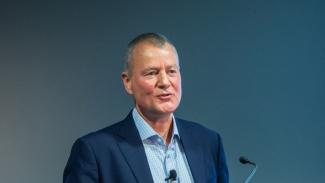
Paul Brown
Chief finance officer, Staffordshire and Stoke-on-Trent Integrated Care Board
ICB chief finance officer Paul Brown took part in an HFMA study tour to Australia to get a new perspective on joining up services, and returned with a better understanding of his own system.
It was with much excitement that I headed down to Heathrow in October 2023 to start my journey to the other side of the world.
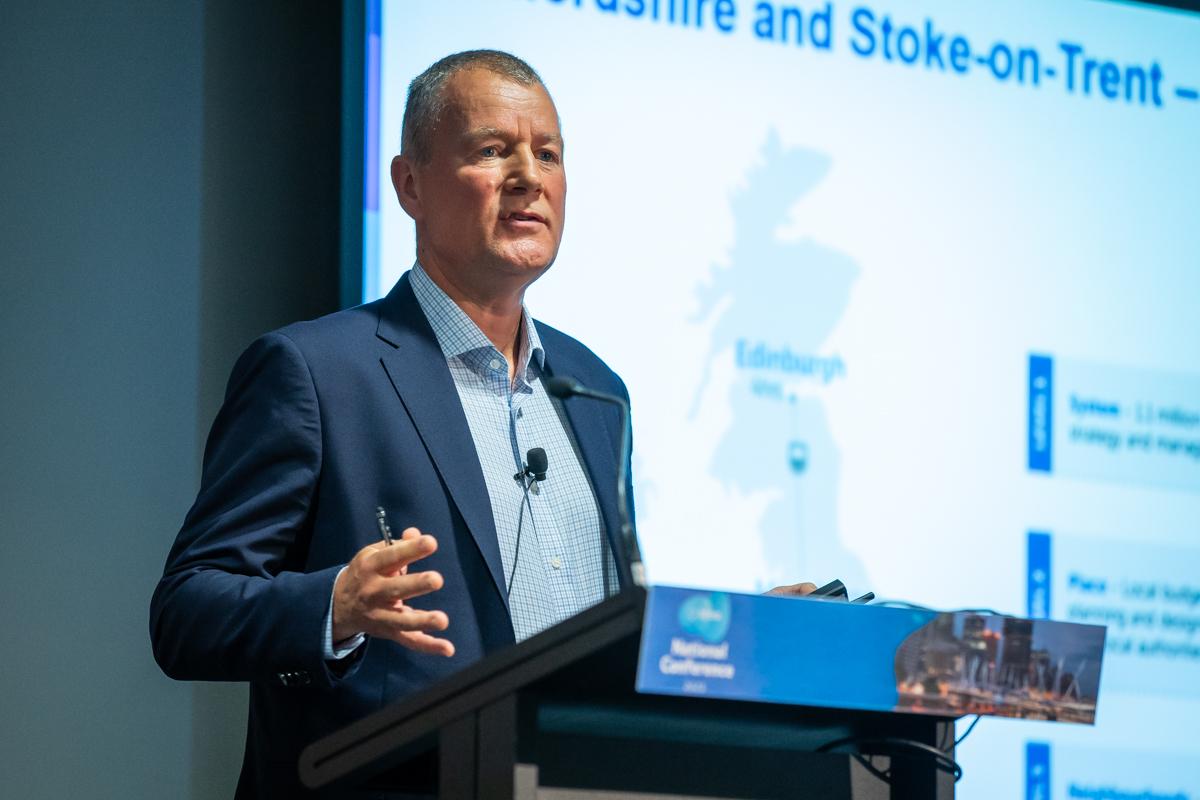
My story starts in the spring of that year when I agreed with my chief executive that some international exposure would really help in thinking through the opportunities for the Staffordshire and Stoke-on-Trent integrated care system. I wanted to develop innovative solutions to address the clinical, operational and financial challenges we are facing. I hoped that some learning from other parts of the world would broaden the opportunities I could explore.
My boss agreed a small budget and so I caught up with Mark Knight, UK HFMA chief executive, and I asked him for ideas on where to look globally for ideas on delivering integrated care. Germany, USA and Australia were his recommendations.
‘Great,’ I thought. ‘Germany might be affordable with my meagre budget, the USA at a stretch, but Australia is out.’ I attempted to contact HFMA colleagues in Germany and USA, but, to be honest, I was finding it quite hard to pin anything down. Then Mark came back to me and said that there was a slot on the HFMA UK team attending the Australian HFMA annual conference, and if I was prepared to take a speaking slot, would I like to come?
Let me think about that. Would I like to escape from my financial deficit, audit committees and all that, and go to Australia at the start of their summer to learn all about their health system? So one nanosecond later, I said ‘yes please’. However, there was an issue with timing as it turned out that the date of the HFMA Australia conference would be the end of October. It just so happens that I was turning 60 in October 2023, and, more importantly, so was my wife! The timing of the conference and then fitting in site visits and research meant that I would have to land in Sydney on my birthday, missing both mine and my wife’s birthday.
It was, therefore, with some trepidation that I approached Mrs. Brown and asked what she thought. Being the wonderful woman that she is, she said ‘go’. Of course this cost me a very expensive birthday present! But the chance of a lifetime was too good to turn down.
So, there I was arriving in Sydney. I've never been on an aeroplane any further than New York, so the journey itself was an incredible experience. I was drawn to watching where the plane was in the world, flying over the Gulf of Mexico, Calcutta, Cambodia and so on. But after imagining a different world 40,000 feet under me, actually arriving in Sydney felt surreal.
My hotel was on Sussex Street, which is next to Kent Street, joins with Oxford Street, just the other side of Hyde Park, and all the cars are driving on the left. Had my aeroplane just gone round in a big circle and landed back in London? Well definitely not, because it was extremely sunny and everyone looked tanned and healthy. At home, I'm out running in the rain through the woods with a few other mad people like myself, in Australia there are thousands jogging, sailing, sitting out eating in the cafes by Darling Harbour and Circular Quay.
Similarities and differences
This is the context to my study tour. The UK and Australia have so many similarities. We speak the same language, we share a lot of culture, we love beating each other at sport. And I found a health system so similar to ours, and yet so different. There on the other side of the world, doctors, nurses, and chief finance officers, doing much the same as we are. But they are doing it to a younger population and they have a lot more money to do it than we do.
In Sydney, I met up with one of my nieces who is a junior doctor, currently working in one of the hospitals in the city. I know this was a stupid question, but I asked her why she was there. ‘Well,’ she said, ‘the pay is better, the weather is incredible, I work 36 hours a week and I work in a health system that is properly funded.’ Told you it was a stupid question!
Ahead of my visit, Mark Knight linked me in with Matt Hall, chief executive of HFMA Australia. I explained to Matt that what I wanted to do was observe some hospitals and health systems within Australia that could help me dig deeper into how integrated care works in Australia, to make comparisons with the models in place in the UK.
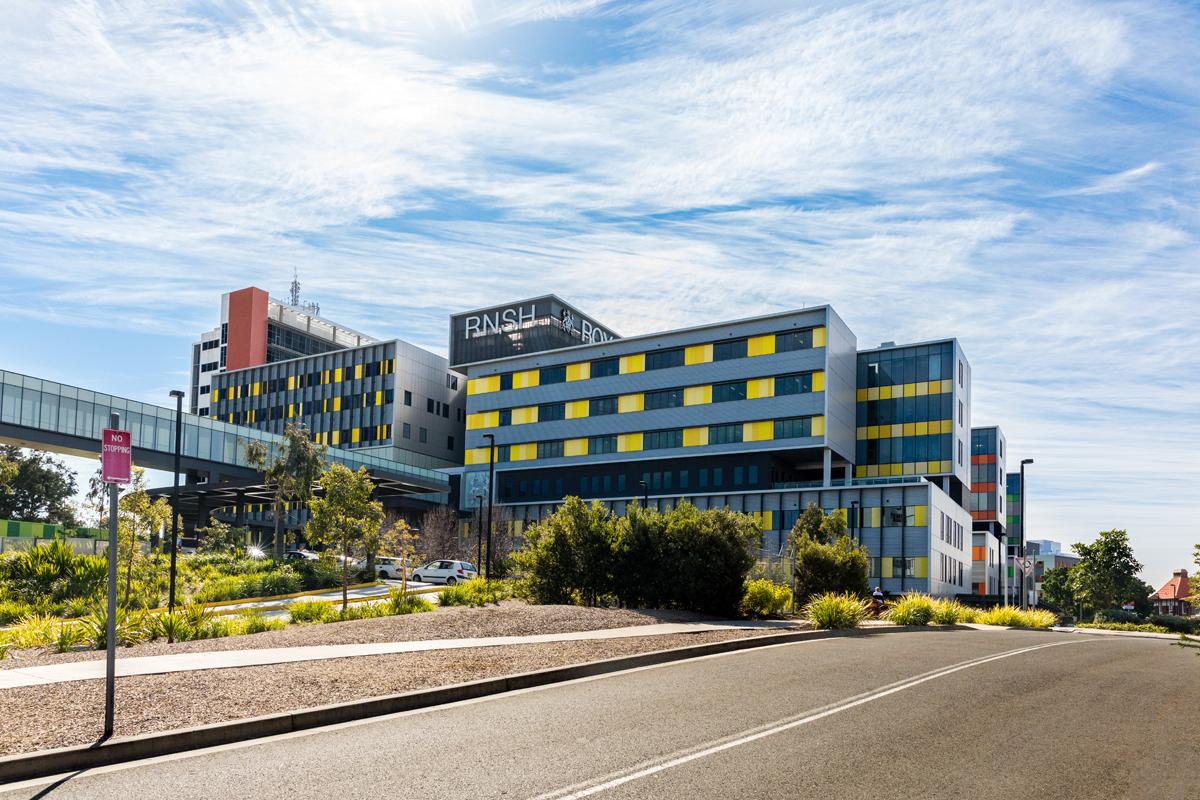
Matt was extremely supportive and arranged for a number of site visits in Sydney and then Brisbane. Many thanks to colleagues at Sydney Royal North Shore Hospital (pictured), Sydney RPA Virtual Hospital, Brisbane Metro North, Royal Brisbane, Brisbane Women's Hospital, Brisbane Metro South and Prince Alexandra Hospital. Across these visits I met a range of finance leaders and clinical staff and I also saw healthcare in action in the Sydney Virtual Hospital, which interestingly had a nurse working in England on night duty – of course that is daytime in England. I then joined the HFMA Australia conference in Brisbane.
Across this study tour I was given an insight into quite wide-ranging aspects of how the Australian health system works. On the last day of the visit, I presented back my findings to the annual conference. Knowing that I had to step up and do that really focused me on the task at hand. And, although nobody back in Staffordshire believes me, I worked extremely hard over that week!
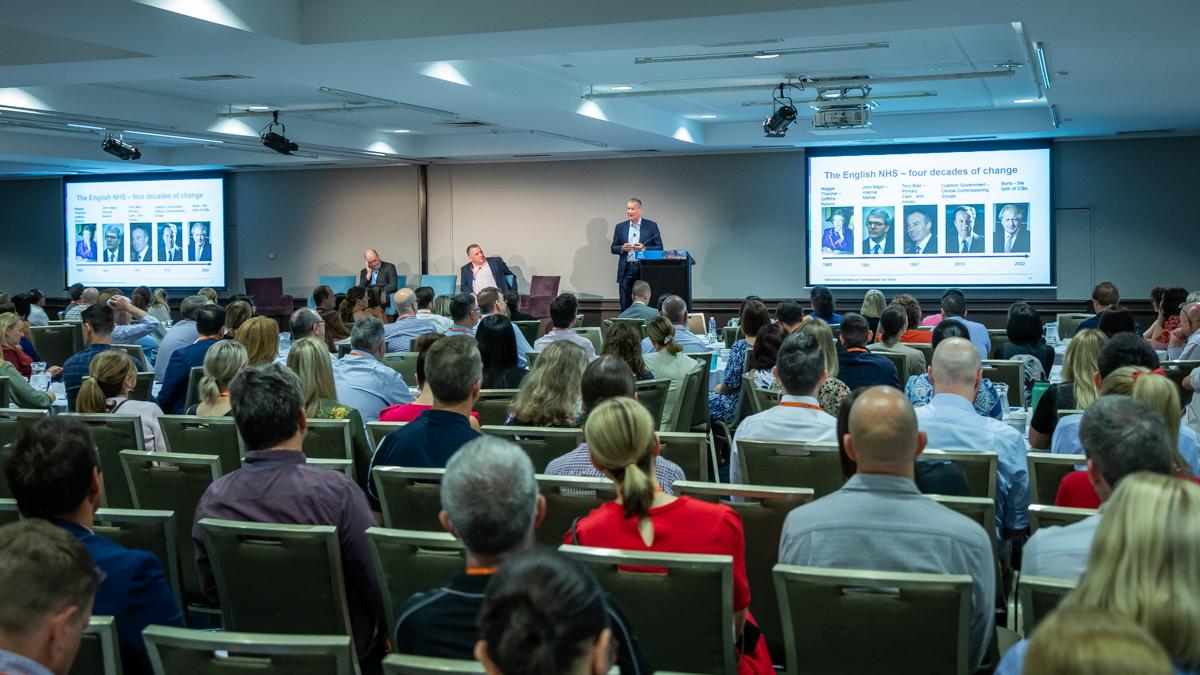
Appearing on the stage of the national conference is always going to be a little bit nerve racking, not helped by the fact that I was speaking after Joe Brumm, who I'm sure many of you know is the creator of Bluey, the children’s cartoon character. Joe is a local resident of Brisbane and I have to say he was fantastic, some really funny stories about being a dad and all the nonsense you get up to playing with your kids. But by this point I had a few conclusions to share, which I hope were helpful.
As I had expected, there were many similarities displayed between the health systems in Australia and the UK. As I walked around the health facilities in secondary and community care, it felt very much like being in a UK hospital – although there weren't any buckets collecting drips of water from the roof! The quality of the facilities was generally a lot superior to the UK, but the sense of hustle and bustle with clinical staff and patients moving across the sites felt just as it does back home.
My desktop research uncovered that, in terms of the percentage of gross domestic product (GDP), we spend similar levels on healthcare. But Australia achieves better outcomes.
Deprivation and scale
A finding that surprised me a lot was that we have similar disparity in terms of healthy living age. In Staffordshire and Stoke-on-Trent I have a gap of about 10 years across the county. I found that Australia has similar differences, driven by the relative deprivation of communities. Australia, of course, has a vast geography and provides healthcare to populations that are hundreds, if not thousands of miles from major cities. This is incredibly difficult and drives quite a bit of its variation in population health. In the UK, the variation can't be attributed to that factor. The 10 years difference that I mentioned on my patch is across just 30 miles.
In my health system, we spend a lot more on the deprived population, and yet we achieve much poorer outcomes for that cohort. So it's not the availability of healthcare that is driving these outcomes, it is something much deeper and more complex. Sadly, we are seeing increasing numbers of children being taken into care, incurring huge cost to the system, and even more sadly we see that a larger proportion of this cohort have ongoing health issues across their life, including high levels of obesity, illness related to smoking, childhood pregnancy and mental health. And I found that exactly the same is happening in Australia, with the associated higher costs of providing healthcare to some of the most highly deprived communities.
There were also some clear differences between the two health systems.
Funding context
I'll start with the money. Right now the NHS is seeing cash increases that are not keeping pace with either inflation or demand, which translates into real terms cuts given the high levels of inflation we have seen in the past two years. Chief finance officers that I spoke to in Australia were still talking about spending additional growth on bed capacity. Some were talking of annual growth of 6%.
I found it both interesting and surprising that the growth is being applied to increase the bed base, rather than looking to improve community and primary care facilities. When I posed this question to people that I met, most agreed that that would be preferential, but the focus on acute care is driven by politics. So here is another similarity. Except in the UK, the big build of new hospitals seems to be a figment of imagination in the minds of a few politicians!
The Australian population has 4.2 million people who are aged over 65, accounting for 16% of the population. In the UK, we have 12.5 million people in this age bracket, accounting for 19%. So, while we both spend similar levels on healthcare in quantum, in the UK that has to be spread over an older population, which we know is significantly more expensive.
I found research that indicated that about 45% of global spend is on the over 65-year-old age group, so this is a very significant difference between our health systems. I said to the Australian HFMA conference that this has to be considered a major risk for their funding of health into the future. For both countries the estimate is that 25% of the population will be in this age category by 2050. In the UK, I estimate this could lead to a 15 percentage point increase in costs for this age group. But for Australia, the increase could be as high as 25 percentage points.
Now to primary care. In the UK we often talk about this being a broken system. We complain because primary care is made-up of thousands of small businesses that operate sometimes independently from the NHS. Well, the Australian system has this same challenge. But, in addition, it has to cope without the national contract system that we have in place. I came to see our national contract as a major strength in providing access to all, not the irritation that I have previously seen it as.
In Australia, there is a system of top-ups, so that GPs can charge additional fees for their service. This leads to a distortion in the market as the more profitable places to practice are those where more people live and where patients can afford the top-up fees. This in turn potentially fuels demand in the secondary care sector for those deprived and rural populations, which have limited access to primary care.
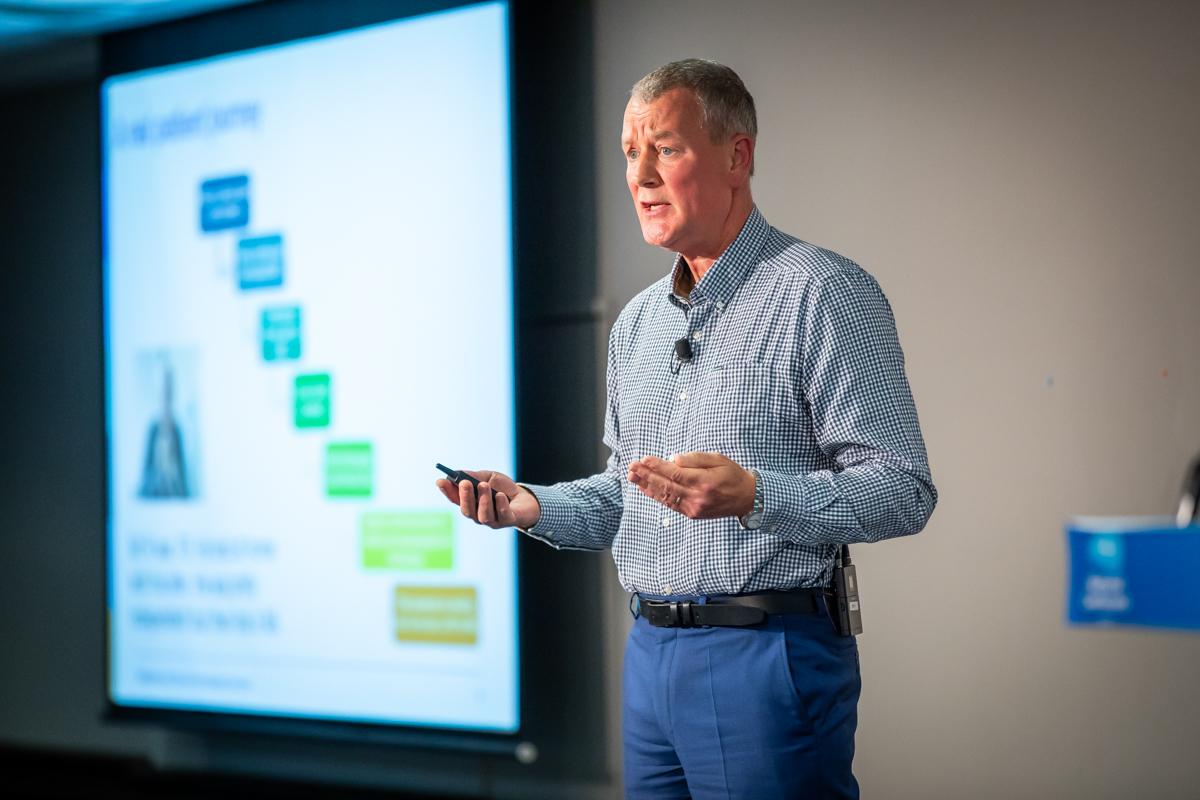
I found a really interesting example of how Australians work. When I was out in Brisbane Metro North, the team there were telling me about their work in running a community facility that was a about 200 miles away from the city. In that community hospital, they were working on primary care models.
Being an accountant, I asked them why they did that, since the hospital was funded as a secondary care provider. They looked at me with a little frown, and said that they did this because it needed doing. In the UK, we will have conversations about where the budget for primary or secondary care sits, and often that drives the solution. It's different in Australia of course given the geography, but this ‘roll sleeves up and sort’ mentality is something that we could do with more of.
Lessons
Drawing all this together over the course of this amazing week, I was surprised about how much it helped me think about the problems we face here in Staffordshire. As an integrated care board, we want to achieve better integration of healthcare. Being in Australia made me realise that our set-up as local health systems that incorporate primary and social care, gives us a great opportunity to do this.
We don't have the huge geographical obstacles faced by Australia and so it should be more feasible to achieve this integration. I realised that although our population is ageing, other parts of the world potentially have a bigger challenge in future than we do, since we already start as a relatively aged population.
Having the time to watch people, I could see a workforce that looked less stressed. So while we start with some advantages, we will only ever achieve this true integration if we have a clinical workforce that is motivated and involved in developing long-term solutions. And to rise to the challenges we have here in the UK, we need some of that Australian ‘can do’ attitude.
So in conclusion, there is a mixed bag of opportunities and challenges. Overall, going away helped me to learn a huge amount about my own system, which surprised me. I'm grateful to Mark and his team for giving me this amazing opportunity. And to my wife for letting me go there on her birthday!
Related content
This webinar series offers colleagues of ICS organisations the opportunity to discuss common priorities, challenges, and successes within their field.
We are excited to bring you a fun packed Eastern Branch Conference in 2025 over three days.